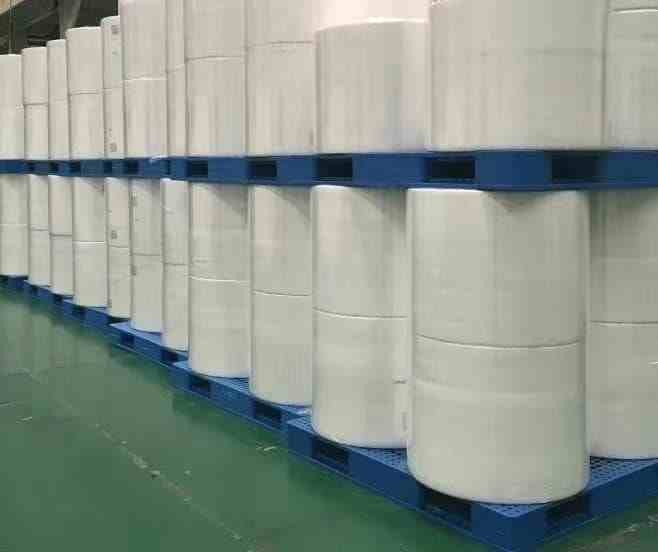The development of the melt-blown method began in the early 1950s. The ultra-fine fibers spun with a diameter of less than 5um were made into non-woven fabrics composed of such ultra-fine fibers. Then other patents also appeared until 20 In the late 1970s, Exxon Corporation in the United States converted this technology to civilian use, and the melt-blown spinning method has been greatly developed, becoming the second-largest production method of polymer direct-laid nonwovens. China started the development of melt-blown nonwoven production technology in the 1950s and has done a lot of work in process theory and product development.
1. MFI of polymer raw materials
As the best barrier layer for masks, the melt-blown cloth is an extremely fine material, and the inside is made up of many crisscross microfibers stacked in random directions. Take PP as an example, the higher the MFI is, the finer the wire is drawn during melting and spraying processing, and the better the filtration performance is.
2. Thermal current velocity
At the same temperature, screw speed and receiving distance (DCD), the faster the hot airspeed is, the smaller the fiber diameter is, the softer the feel of the non-woven cloth is gradually, and the more the fiber tangles are, which leads to the more compact and smooth fiber net and the higher the strength.

3. Hot air-jet angle
The hot air jet angle (see Figure 5a) mainly affects the stretching effect and fiber shape. The smaller the angle will promote the formation of parallel fiber bundles, resulting in poor uniformity of the non-woven fabric. If the angle tends to 90°, a highly dispersed and turbulent airflow will be generated, which is beneficial to the random distribution of fibers on the condensed mesh curtain, and the final melt-blown fabric has good anisotropic properties.
4. Receiving distance (DCD)
Too long a receiving distance will cause the longitudinal and transverse strength and bending strength to decrease, the non-woven fabric feels fluffy, and will cause the filtration efficiency and filtration resistance to decrease in the melt-blown process.
5. Screw extrusion speed
In the case of constant temperature, the screw extrusion rate should be maintained within a certain range. Before a certain critical point, the faster the extrusion speed, the higher the amount of molten spray, the greater the strength; When the critical value is exceeded, the strength of melt spraying cloth decreases instead, especially at MFI > 1000. This may be because the extruding rate is too high, which leads to insufficient wire drawing and serious wire so that the cloth surface bonding fiber decreases, and the strength of melt spraying cloth decreases.
The above information is provided by the paint cover felt exporter.